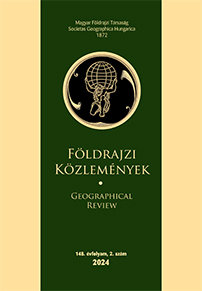A TISZA-TÓ VÁLTOZATOS TERMÉSZETI ADOTTSÁGAINAK TURISZTIKAI KIHASZNÁLÁSA
Abstract
Lake Tisza is a lowland reservoir with an area of 127 km2 in the middle of the Carpathian Basin established in the 1970s. Among its original functions, in addition to flood control, it was expected to irrigate a larger agricultural area and increase water freight transport. Today, buffering of extreme water conditions, nature conservation and recreation have become the main profiles. The diverse hydroecological features and mosaic landscape structure of the lake allow for versatile nature conservation and utilization in tourism. This differentiated use is in line with the worldwide trend of favouring locations with multiple leisure activities in close proximity to each other. Lake Tisza offers fishing, swimming, sailing, canoeing, nature observation boating and cycling opportunities, but due to its status as a Ramsar bird conservation site, it is also a valuable destination for ornithologists. In the course of our research, we examined the current spatial pattern of these activities and the possible arrangement of expedient further development.
Copyright (c) 2024 Borbála Benkhard, Péter Csorba, Tamás Mester, György Szabó, Rooien Azin, Emőke Kiss, István Fazekas, Róbert Vass, Beáta Babka, Dávid Balázs, Mária Vasvári, Dániel Balla

Dieses Werk steht unter der Lizenz Creative Commons Namensnennung - Nicht-kommerziell - Keine Bearbeitungen 4.0 International.



